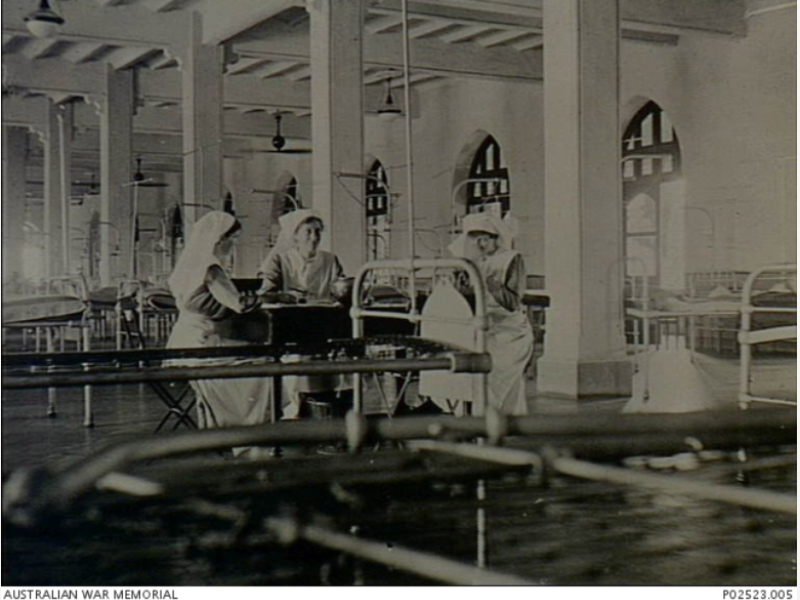Sister Emily Clare, Australian Army Nursing Service
Born in Melbourne on 11 September 1890, Emily Clare was the youngest daughter of Peter and Mary Clare. She had four sisters and three brothers.
Clare undertook three years of nursing training at Stawell Hospital in Victoria, and enlisted in the Australian Army Nursing Service in November 1917.
More than 3,000 Australian civilian nurses volunteered for active service during the First World War, mostly with the AIF’s Australian Army Nursing Service. They were posted to Britain, France, Belgium, the Mediterranean, India, and the Middle East, where they worked in hospitals, on hospital ships and trains, or in casualty clearing stations closer to the front line.
Sister Clare embarked for overseas service a little over a week after enlisting. She was posted to the Victoria War Hospital in Bombay, India, where her patients included Turkish and German prisoners of war, and wounded British troops.
In a letter to her sister later published in a Melbourne newspaper, Clare wrote of her experiences nursing in the prisoners’ ward: “The Turks and Germans have quite a cordial form of hate towards each other”, she wrote.
She also detailed an incident where one of the German prisoners “sent the orderly I had when I was in that ward up to me with two lions’ claws, as a souvenir, with his grateful thanks for what I did for them when I was there”.
Cholera was a major problem in India at the time, and Clare wrote to her sister that the nurses were not allowed outside the city due to the spread of the disease. There were, she said, more than 600 deaths in a week.
Clare was later transferred to the 34th (Welsh) Military Hospital in Deolali. While nursing at the hospital she became ill with influenza, and then pneumonia.
Clare died on 17 October 1918, less than a month before the Armistice. She was 28 years old.
Sister Emily Clare is buried in the Deolali Government Cemetery in India. Her name is also listed on the Australian War Memorial Honour Roll, among more than 60,000 Australians who died while serving in the First World War.
Emma Campbell, Researcher, Military History Section
Image: Bombay, India. c 1917. Three members of the Australian Army Nursing Service (AANS) sitting at a table in a ward at Victoria War Hospital. The hospital had two hundred beds on each of the first three floors and Sister's quarters on the fourth. It received the most serious cases as it was five minutes from the dock. Patients were received from Mesopotamia, including British POWs released by the Turks, Turkish prisoners and British troops. At one stage, British troops suffering from heatstroke were received at one thousand a week.

 Australian War Memorial
Australian War Memorial